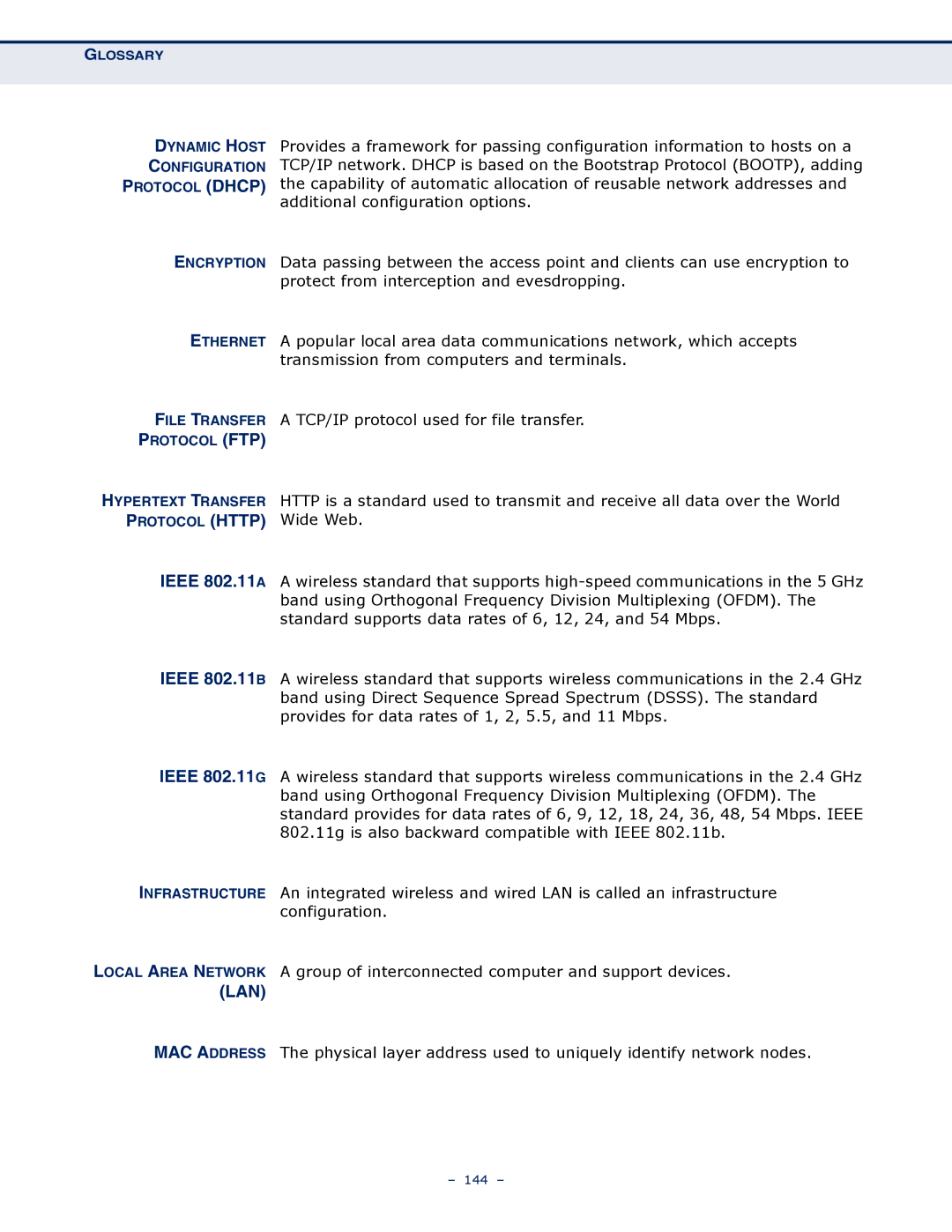GLOSSARY
DYNAMIC HOST Provides a framework for passing configuration information to hosts on a CONFIGURATION TCP/IP network. DHCP is based on the Bootstrap Protocol (BOOTP), adding
PROTOCOL (DHCP) the capability of automatic allocation of reusable network addresses and additional configuration options.
ENCRYPTION Data passing between the access point and clients can use encryption to protect from interception and evesdropping.
ETHERNET A popular local area data communications network, which accepts transmission from computers and terminals.
FILE TRANSFER A TCP/IP protocol used for file transfer.
PROTOCOL (FTP)
HYPERTEXT TRANSFER HTTP is a standard used to transmit and receive all data over the World PROTOCOL (HTTP) Wide Web.
IEEE 802.11A A wireless standard that supports
IEEE 802.11B A wireless standard that supports wireless communications in the 2.4 GHz band using Direct Sequence Spread Spectrum (DSSS). The standard provides for data rates of 1, 2, 5.5, and 11 Mbps.
IEEE 802.11G A wireless standard that supports wireless communications in the 2.4 GHz band using Orthogonal Frequency Division Multiplexing (OFDM). The standard provides for data rates of 6, 9, 12, 18, 24, 36, 48, 54 Mbps. IEEE 802.11g is also backward compatible with IEEE 802.11b.
INFRASTRUCTURE An integrated wireless and wired LAN is called an infrastructure configuration.
LOCAL AREA NETWORK A group of interconnected computer and support devices.
(LAN)
MAC ADDRESS The physical layer address used to uniquely identify network nodes.
– 144 –
